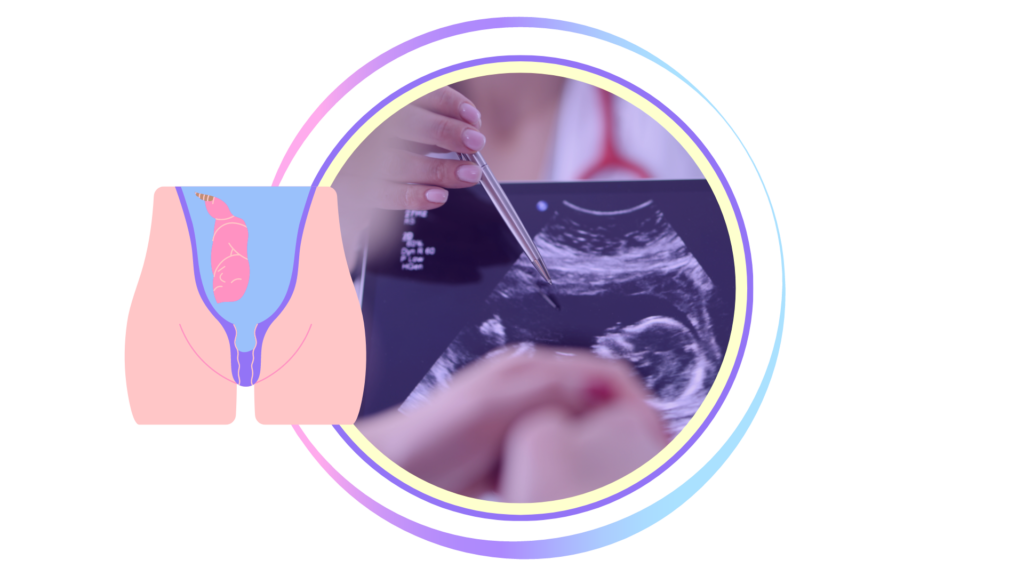Polyhydramnios - Increase in Amniotic Fluid
Published : 20/05/2024
Last updated: 15/07/2024
Do you know that amniotic fluid does more than just keep your baby warm and cushioned? It’s essential for a healthy pregnancy. By the second trimester, babies start swallowing and tasting the fluid, even practicing breaths to get their lungs ready for birth.
Sometimes, however, the body can produce too much amniotic fluid, a condition known as polyhydramnios. While this is often mild and resolves on its own, it can sometimes lead to complications.
In this Article
- What is Polyhydramnios or increased amniotic fluid?
- How common is polyhydramnios?
- What is the reason behind Polyhydramnios?
- Child Health Factors
- Complexities due to increased amniotic fluid?
- What are the symptoms of polyhydramnios?
- How to diagnose polyhydramnios?
- How to treat polyhydramnios?
- What should a mamma do if she has polyhydramnios?
- How to plan for birth if you have polyhydramnios?
- A Gentle Nudge from Mammas Journey
What is Polyhydramnios or increased amniotic fluid?
When you’re pregnant, the fluid around your baby is called amniotic fluid, and it’s super important for their growth. But if there’s too much of it, it’s called polyhydramnios. This usually happens in the later stages of pregnancy but can sometimes show up earlier. Doctors usually catch it during your regular check-ups.
A little extra fluid usually isn’t a big deal, but if there’s a lot, you might need more check-ups and possibly a hospital delivery. It’s not usually a serious issue, but your doctor will keep an eye on things and give you the right treatment if needed. If you want more details, there’s a whole article about it!
How common is polyhydramnios?
Polyhydramnios occurs in roughly 1 to 2 percent of all pregnancies
What is the reason behind Polyhydramnios?
The cause of excess amniotic fluid during pregnancy is not always known, but the following factors are thought to be responsible:
Maternal Health Factors—
• Twin or multiple pregnancy
• If the mother has pre-existing diabetes or develops gestational diabetes (especially if the diabetes is uncontrolled [1])
• If you have a pregnancy infection
Child Health Factors—
Polyhydramnios can also be caused by certain complications related to the growth and development of the baby. Normally, the baby in the womb balances the amount of amniotic fluid by swallowing it and excreting it as urine.
If the baby has difficulty swallowing for some reason, the amniotic fluid may increase and cause polyhydramnios. In particular-
• A blockage in the baby’s digestive tract called ‘gut atresia'[2]
• Problems with the baby’s swallowing such as central nervous system or chromosomal problems
• Low red blood cell count in the baby (anemia)
• Blood incompatibilities between mom and baby (like Rh and Kell diseases)
• Twin-to-twin transfusion syndrome, where twins share the same womb
• Heart disease in children
• Infant infection
Complexities due to increased amniotic fluid?
Although many mothers with polyhydramnios have healthy pregnancies and deliver healthy babies, there’s a heightened risk of certain complications. As the uterus enlarges, polyhydramnios can exert pressure on nearby organs, potentially leading to these issues.
For instance [3]—
• Mother’s shortness of breath
• Preterm delivery or delivery before 37 weeks
• Premature water breaking
• Mother’s hypertension
• Maternal urinary tract infection
• Malposition or presentation means the baby is in a different position than normal
• Prolapse of the cord through the cervix before delivery (cord prolapse)
• Excessive bleeding after delivery
• Physical problems of the child
• An enlarged baby’s head due to maternal diabetes is called macrosomia[4]
What are the symptoms of polyhydramnios?
A very small increase in amniotic fluid may not cause any symptoms. However, if there is too much amniotic fluid, the following symptoms may appear –
- Abdominal pain or abdominal tightness
- Shortness of breath
- Heartburn
- Constipation
- Passing more urine than usual
- Difficulty feeling fetal movements, due to the extra amniotic fluid cushioning your uterus.
- Swelling of the legs, feet and vulva (external part of the genitals).
Due to excess amniotic fluid, the uterus becomes enlarged and puts pressure on the surrounding organs like stomach, lungs, bladder, rectum etc. These symptoms are mainly due to excess pressure.
Each of these symptoms can also occur during a normal pregnancy. So if you see these symptoms, do not worry and consult a doctor.
Your doctor may suspect you have polyhydramnios from three main symptoms—
1. If your belly is extra-large compared to your pregnancy period
2. If you can’t hear your baby’s heartbeat
3. If your baby’s position in the womb cannot be determined
How to diagnose polyhydramnios?
Amniotic Fluid Index (AFI)—
A routine ultrasound scan can determine the amount of amniotic fluid in the womb. This is called the amniotic fluid index or AFI. The amniotic fluid index for a normal pregnancy is 5 cm to 25 cm. If the amount of amniotic fluid is less than 5 cm, it is called ‘oligohydramnios’ and if it is more than 25 cm, it is called ‘polyhydramnios’. This test is performed after 24 weeks of pregnancy. [5]
Other Tests—
If the doctor thinks you have polyhydramnios from your symptoms and the ultrasound exam, he may recommend further tests to diagnose the cause, based on the timing and condition.
For example –
1. Blood tests: This will check if there are any infectious diseases associated with polyhydramnios.
2. Glucose challenge test: This will check if you have diabetes.
3. Amniocentesis: Amniotic fluid from your uterus will be taken for testing. Amniotic fluid contains various cells and chemicals from the fetus or your baby. These will check if your baby has any genetic problems.
4. Non-stress test: A special device is used to measure your baby’s movement and heart rate. This will check if there is any abnormality in the baby’s heart rate.
5. Doppler ultrasound: A more in-depth ultrasound examination will check if your baby’s circulation is normal.
How to treat polyhydramnios?
A small increase in amniotic fluid usually goes away by itself. But if it’s caused by a condition like diabetes, it might need treatment. In severe cases with symptoms, you might need to stay in the hospital for care.
- Shortness of breath
- Abdominal pain or contractions
Doctors may use the following methods to treat polyhydramnios:
1. Amniocentesis:
Doctors can remove excess amniotic fluid from inside the womb, a procedure called ‘amniocentesis’ in medical terms. However, this approach may have some risks. For example –
- Premature birth
- Premature water breaking
- Premature separation of the fetus
2. Medicines:
If necessary, the doctor can give you a medicine called ‘endomethacin’ to be taken orally. It is used for up to 48 hours, which helps reduce uterine contractions and amniotic fluid volume. But it must be taken as per the doctor’s advice and know about the side effects before use.
What should a mamma do if she has polyhydramnios?
Follow these tips if you have polyhydramnios—
• Avoid anxiety first. This is not a problem to worry too much about.
• Take necessary rest. If you are working, take maternity leave some time in advance.
• Discuss your delivery method with the doctor in advance. Know what to do if the water breaks before the scheduled time or labor starts.
• Consult a doctor if you develop any new symptoms, if your stomach becomes excessively large or if you feel discomfort.
• If you know other mothers who have this problem, you can also discuss with them.
Also be mentally prepared for possible situations—
• Additional check-ups and additional ultrasound scans may be required to monitor the condition of your unborn baby.
• Additional tests may be needed to find the cause of polyhydramnios, such as testing your diabetes or blood glucose levels, amniocentesis, or taking out your amniotic fluid.
• If a cause is found after examination, it may require treatment. For example, if you have maternal diabetes, you need to start diabetes treatment.
• If you have too much amniotic fluid, sometimes the doctor can remove the excess fluid with a needle or treat the excess fluid.
How to plan for birth if you have polyhydramnios?
• If you have polyhydramnios, you will be advised to have a hospital delivery. This way if you need any treatment during delivery it can be arranged.
• You will usually be asked to wait until labor pains have subsided naturally before giving birth. However, if you and your unborn child are at risk, labor may be artificially induced or delivered by caesarean section.
• More fluid may pass after the water breaks in polyhydramnios than in normal delivery. This is absolutely normal, nothing to fear. However, your baby’s heart rate will need to be closely monitored during this time.
• Your baby may have special tests after delivery. For example, it may be necessary to insert a thin tube through the child’s throat to check if there is any problem in the stomach or digestive tract.
A Gentle Nudge from Mammas Journey
It’s okay if you are experiencing polyhydramnios. Like other conditions during pregnancy, it is manageable. While it cannot be prevented, you can reduce the risk by keeping certain factors under control. If you have had a cesarean delivery before, it might become a bit more critical due to potential pressure on your stitches. Stay active and maintain a positive outlook.



